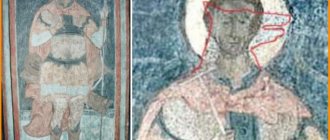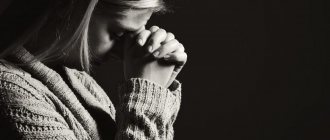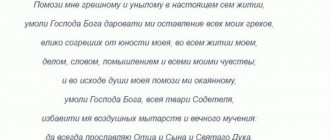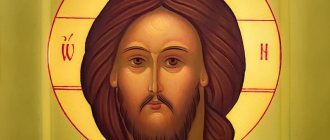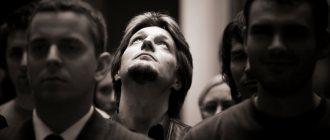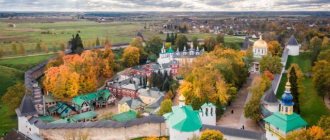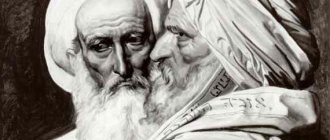There have never been reforms in Eastern Orthodoxy. There has never been a rational review of its catalog of Saints. This explains the number of mythical saints depicted on icons long ago and still appearing in the church calendar today. Revered Saints, although their reality is equivalent to the reality of Mashenka and the Three Bears.
One of the most interesting is the group of saints known as the “Seven Sleeping Saints of Ephesus.”
Holy Seven Youths of Ephesus
Memory 4/17 August
In 250, Emperor Decius left Constantinople for the East. Stopping in Ephesus, he ordered the townspeople to gather in the temples to make sacrifices to the gods. On the third day of the festivities organized for this occasion, the emperor ordered the arrest of all Christians. Jews and pagans helped the soldiers seize all the faithful they found in the streets and squares in order to force them to make sacrifices. Many yielded under the threat of torture, and those who refused to comply were mercilessly killed.
Maximilian, the son of the prefect of the city, and six other young men from the most respected families who served in the army1 mourned and shed tears over the suffering of the martyrs, and even more over the lost souls of the apostates.
Each time they learned about the sacrifice made, they went to church to pray. This behavior did not escape the pagans, who reported on them. Bound, with their eyes still wet from tears, the seven young men were brought to the emperor. Answering the question about the reason for their disobedience, Maximilian said for everyone: “We know God, whose glory fills heaven and earth, and we offer Him a secret sacrifice through confession of faith and constant prayer!” The enraged Decius ordered the belts, the insignia of military insignia, to be removed from them and, pretending to be merciful, he ordered the Christians to be untied and gave them a few days to think until he returned to the city. After consulting, the seven young men decided to hide in a large cave to the east of the city and, in silence and prayer, prepare for a new meeting with the tyrant. While they were in this refuge, Jamblichus, the youngest of them, brought food for everyone and for this purpose from time to time went down to the city.
Returning to Ephesus, Decius ordered Christian captives to be brought to him to offer them sacrifices to idols. Having learned about this, the young men intensified their prayers. They cried out to God with such fervor that when they sat down in the evening to eat the bread brought by Jamblichus, they were overcome by sleep. By the Providence of God, they all reposed with prayer on their lips.
Angered by the absence of the young men, Decius ordered to interrogate their parents, who indicated the place of refuge of their sons. Then he sent people there, ordering to wall up the entrance to the cave so that the saints would suffocate. The royal servants Theodore and Varv, to whom this order was given, were themselves secret Christians, but they carried out the order reluctantly, and then cut out the story of the martyrdom of seven young men on lead tablets, put them in a box and hid them nearby.
About 200 years later, during the reign of Theodosius the Younger (c. 446), a heresy arose in the Church, spread by the Aegean bishop Theodore. His teaching denied the resurrection of the dead and led to the destruction of many souls. Seeing this, the pious Emperor Theodosius with tears prayed to God to reveal the truth. At this time, a certain Adatius, the owner of the land on which there was a cave with seven young men, decided to build a cattle pen on this place. While obtaining stones for construction, he excavated the entrance to the cave - and immediately the seven young men came to life, as if they had fallen asleep the day before. They immediately remembered the persecution and the order of Decius to make a public sacrifice. Maximilian said: “Let us come to Decius! Let us not be afraid of persecutors and we will not betray our faith out of cowardice. You, Jamblichus, take the money and go into the city to buy bread. Take more than usual, since we are very hungry, and at the same time find out if the emperor is looking for us.”
Approaching the city, Jamblichus was first of all surprised to see images of the cross on all the gates. Not recognizing either people or houses, he asked himself whether he was dreaming or whether he had come to another city. He bought bread at the market, but when he handed the coins to the baker, he looked at him with suspicion and asked if he had found an old treasure, because on the coins there was an image of one of the long-ruling emperors. At these words, Iamblichus trembled with fear and, thinking that he would now be taken to the emperor, wanted to flee, but the merchants grabbed him and threatened to kill him if he did not share the treasures. Putting a rope around the young man's neck, they led him to the market square.
At that moment the crowd met the proconsul, who was going to see Bishop Stephen. Having learned about the reason for the excitement, he asked Jamblichus where he found the treasures and where he was hiding them. The young man replied that he had not found anything, and that he got the coins from his parents. When asked where he was from, Jamblichus replied: “I was born here, if this city is really Ephesus,” and named his parents. These names were unknown to the proconsul and even sounded unusual. Angry, he accused Jamblichus of deception, while coins from two hundred years ago indicate that he had found a treasure. Jamblichus fell at his feet and asked where the Emperor Decius was. When he was told that he had died many years ago, Jamblichus invited the proconsul to go to the cave and make sure that he and his comrades were hiding there from the persecution of Decius.
The proconsul, accompanied by the bishop and a large crowd, went to the cave where lead tablets with the names of the holy youths were discovered. The proconsul and bishop wrote to the emperor that the miraculous appearance of seven young men who had died many years ago served as clear evidence of the possibility of bodily resurrection. The emperor hurried to Ephesus, met with the saints and watered their feet with tears. Having told their story in detail to the emperor and the bishops present, Maximilian and his comrades quietly sank to the ground and finally fell asleep in the sleep of death.
Theodosius ordered the production of seven golden sarcophagi and a solemn funeral for the young men, to which he summoned all the inhabitants of Ephesus, poor and rich.
But the next night the saints appeared to the emperor and asked to leave their bodies in the same cave in anticipation of the general resurrection. The Cave of the Seven Sleeping Youths, traditionally identified with the cave where St. Mary Magdalene rested, has become a famous place of pilgrimage. The veneration of sleeping youths spread throughout the Christian world2.
1 In more ancient editions of the life they are called young warriors, but then they began to be represented as children, especially in the iconographic tradition.
2 And it was even reflected in the Islamic tradition.
From the book “Synaxarion: Lives of the Saints of the Orthodox Church,” published by the Sretensky Monastery Publishing House.
Compiled by Hieromonk Macarius of Simonopetra, adapted Russian translation by Sretensky Monastery Publishing House
Icon of the Seven Youths of Ephesus
Orthodox iconography contains many images of saints. Among them we can highlight the icon of the seven youths of Ephesus, who by their example confirm Divine Providence.
The Orthodox martyrs Maximilian, Jamblichus, Martinian, John, Dionysius, Exacustodian (Constantine) and Antoninus are revered in the church as courageous warriors who were not afraid of punishment for their apostasy before the emperor. By their example, Christians are confirmed in the faith, courageously endure adversity and trust in God's help, which immediately comes to those who believe with all their hearts.
History of the icon of the seven youths of Ephesus
The young men lived in the third century, and one of them, Maximilian, was the son of the Ephesian mayor. The rest were children of noble citizens, and all of them were in the military service of the emperor. Arriving in Ephesus, the emperor ordered all citizens of the city to be present at the ungodly sacrifice to the pagan gods.
All those who disobeyed were promised execution as apostates. The young men came to the emperor and told him about their faith in the Lord. For this, Decius deprived them of their military ranks, removing the warriors’ belts, and ordered them to renounce their faith. He hoped that during his absence the young men would change their minds and once again join his loyal subjects.
However, the youths retired to a cave, where they continued to pray fervently. Their lives were now at the mercy of a cruel pagan. Returning from the campaign, Emperor Decius ordered the youths to be walled up in a cave, thereby dooming them to death from hunger and thirst. However, the Lord plunged his children into a sleep that lasted almost two centuries.
The secret Christians, who were among those who doomed the young men to death, left a message in the stones about what happened. After 200 years, the cave was dismantled, and the youths awoke from their sleep. In confirmation of their incredible words, the Orthodox discovered a note that spoke about Divine Providence.
So the Lord, through seven young men, showed the whole world his power. The young men fell into sleep again, this time completely.
Description of the icon of the youths of Ephesus
The icon of youths is quite common in Russia. Their images became widespread, first on small plates, and then full lists were made from them. The images vary, and in some images the youths sleep around the icon of the Lord or St. Nicholas, while in others the Lord is depicted hovering over the sleeping martyrs.
Where is the icon of the seven youths of Ephesus located?
The most famous is the fresco located in the Assumption Cathedral in Moscow. Famous icons are located in Yuryev-Polsky, Yaroslavl, St. Petersburg, Tobolsk and other localities in Russia. Pilgrims annually travel to Ephesus, to the place where the temple of Artemis of Ephesus was located, to touch the shrine and ask the youths for healing from ailments and strengthening their faith.
How does the image of the Seven Youths of Ephesus help?
Everyone who needs healing from physical and mental illnesses turns to the help of the icon. It is believed that through healing sleep, each person who turns to him regains his health.
Those praying ask the youths for instructions, guidance on the right path through life, protection from evil, protection and help.
Prayerful words often helped the righteous gain strength to fight unbelief, instill the light of faith in the souls of those around them, and preach the Word of God.
Celebration date
The Youths of Ephesus are commemorated twice in the church. The first time was on August 4 , when they fell into a saving sleep, and the second time on October 22 , when the martyrs awakened. These are dates of the Julian calendar. Mention of martyrs in the church also occurs on the first of September , on the day of the church new year.
Prayer before the image
“Youths of Ephesus, we turn to you with humble prayer. Send down upon us a blessed and healing sleep, granting victory of the body over ailments.
Send, great martyrs, your grace to the servants of God to help them cope with difficulties.
Grant strength to fight the wicked and spread the Word of God, igniting sparks of faith in the souls of people everywhere. May we glorify you and your feat for centuries. Amen".
The Orthodox faith helps you cope with all everyday difficulties, gives you the strength to resist any negativity and protect yourself from ill-wishers. True faith in the soul will help everyone, and sincere prayers to the Lord will be your salvation in difficult moments when Divine support is needed.
Among Orthodox icons there are many faces that can change our lives, send us protection and heal us from all kinds of diseases. This is confirmed by the words of numerous pilgrims who were healed at the burial place of the youths of Ephesus.
We wish you happiness, and do not forget to press the buttons and
The icon “Helper of Sinners” is deeply revered by Orthodox Christians. This is one of the most amazing icons, whose spiritual…
The image of the Mother of God is especially revered by all Orthodox Christians. The Vladimir Icon is notable for its special power: prayers before it...
The “Protection of the Mother of God” icon is one of the most significant shrines among all Orthodox images. This icon...
The prayer of parents for a child has the greatest power. It is the sincere desire of a loving relative that can work miracles...
Source: https://dailyhoro.ru/article/ikona-semi-otrokov-efesskih/
Coin of Decius Trajan
While paying for the bread, Jamblichus gave the merchant a coin from Emperor Decius and was detained as having hidden a treasure of ancient coins. He was brought to the mayor, who at that time had a bishop. The priest realized that God was revealing some secret through the young man, and he and the people went to the cave.
There, in a pile of stones, he found a sealed reliquary. Having read the names of the saints and the circumstances of their burial on the tin tablets, the bishop entered the cave and saw living youths in it. Thus, it was shown that the Lord, through awakening them from a long sleep, reveals to the Church the secret of the resurrection of the dead - the miracle of their awakening contributed to the strengthening of faith in the resurrection of the flesh.
Soon the emperor himself arrived in Ephesus and talked with the young men in the cave. Then the holy youths, in front of everyone, bowed their heads to the ground and fell asleep again, this time until the day of the general resurrection. The emperor wanted to place each of the youths in a precious shrine, but, appearing to him in a dream, the holy youths said that their bodies should be left in a cave on the ground.
The Seven Sleeping Youths of Ephesus
“Crucifixion. The Holy Trinity. Icon of the Mother of God “Sovereign”. Seven Saints"
A large male cross on both sides of the board is framed by prayers. On the front side there is a prayer to the Cross of Christ, on the back - to the Mother of God. This symbolic division, when the front side is dedicated to the Savior and the back to His Most Pure Mother, is traditional. In accordance with it, saints are also placed on the cross.
On the front side in the center is the Crucifixion of Christ. The Savior is surrounded by icons of His closest disciples - the Apostle Peter, the Apostle Paul and the Apostle Andrew the First-Called. Above the head, in that part of the cross that symbolizes Heaven, is an icon of the Holy Trinity. The Triune God blesses the suffering of God the Son to atone for the sins of all mankind. The King of Glory ascends on the Cross above the world to save it from eternal death and return the lost paradise to humanity. He gives His Cross to people as a deadly weapon against all evil spirits. “The cross is omnipotent, overthrow the wicked enemies who hate and blaspheme you madly, the tongues have fallen and quench their vacillations. O All-Holy and Christ-Bearing Cross, protect us with Your power,” it is written around.
On the back in the center is the symbol of Orthodox statehood, the Sovereign Icon of the Mother of God. The name of the icon corresponds to its iconography. The Mother of God is presented as the Queen of Heaven and the Queen of Earth. She sits on the royal throne with the Divine Son on her lap. In Her outstretched right hand is a scepter, the left is placed on the ball of the orb. The head of the Mother of God is crowned with a royal crown surrounded by a golden halo. Above in the clouds is the Lord of Hosts, blessing the world.
The icon is surrounded by saints who personify the spiritual foundations of Orthodox power in Russia. On the left is the Great Martyr George the Victorious, a brave warrior-snake fighter, whose image is on the Russian coat of arms. On the right is the holy noble Grand Duke Alexander Nevsky, the holy builder of the Russian state, who defended the Russian land from enemies all his life. Below are the holy princes Boris and Gleb, the innocently murdered sons of the holy Equal-to-the-Apostles Prince Vladimir, the baptist of Rus'. Just 27 years after the Baptism of Rus', the holy brothers showed the Russians, accustomed to blood feud, that evil cannot be repaid with evil, even under the threat of death.
The miraculous image of the Mother of God “Sovereign” was found on the day of the abdication of the throne by the Emperor. martyr Nicholas II Alexandrovich. The coincidence of the day of the appearance of the icon with the day of the abdication of the emperor was perceived by the Russian Orthodox people as symbolic evidence that royal power and guardianship of Russia is now in the hands of the Most Holy Theotokos Herself.
A prayer is written around: “All Queen and Lady, destroy with the scepter of Your Nativity, O Virgin, the uprising of those who blaspheme the power of the cross, give us strength and purification, victory and help, Your faithful people.”
The Seven Sleeping Youths of Ephesus and Their Miraculous Awakening.
According to the life, by the will of God the youths did not die, but fell asleep in a wonderful sleep that lasted almost two centuries. In the 5th century, under the ruler Theodosius the Younger (some versions of the text mention Theodosius the Great), heretics appeared who rejected the resurrection of the dead during the Second Coming. “How can there be a resurrection of the dead,” they asked, “when there will be neither soul nor body, since they will be destroyed?” There was also another opinion: “Only souls will have reward, since it is impossible for bodies to rise and come to life after a thousand years, when not even ashes remain of them.” The Lord revealed the secret of the expected resurrection of the dead and the future life through the Seven Youths.
The owner of the site (there is a variant of his name Adolios), where the city of Ohlon was located, began construction, and his workers dismantled the entrance to the cave (an option is to use the cave as a pen for cattle). At that moment, the Lord revived the youths, and they woke up as if from an ordinary dream, not suspecting that almost two hundred years had passed. Preparing to accept torment, the friends instructed Jamblichus to once again buy them bread in the city. Approaching the city, the young man was amazed to see a holy cross on the gate - the time of persecution of Christians had long passed.
